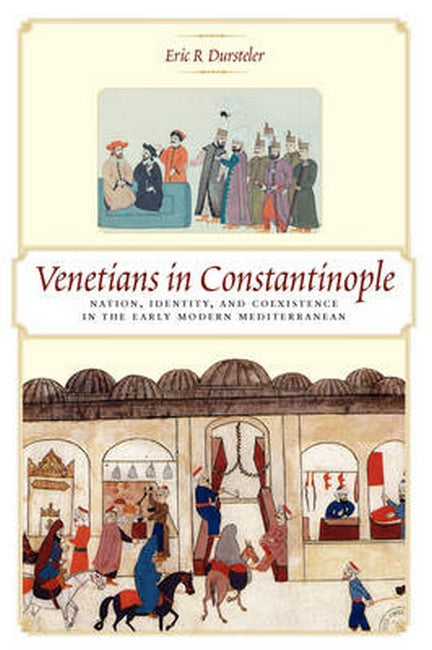Historian Eric R Dursteler reconsiders identity in the early modern world to illuminate Veneto-Ottoman cultural interaction and coexistence, challenging the model of hostile relations and suggesting instead a more complex understanding of the intersection of cultures. Although dissonance and strife were certainly part of this relationship, he argues, coexistence and cooperation were more common. Moving beyond the ''clash of civilizations'' model that surveys the relationship between Islam and Christianity from a geopolitical perch, Dursteler analyzes the lived reality by focusing on a localized microcosm: the Venetian merchant and diplomatic community in Muslim Constantinople. While factors such as religion, culture, and political status could be integral elements in constructions of self and community, Dursteler finds early modern identity to be more than the sum total of its constitutent parts and reveals how the fluidity and malleability of identity in this time and place made coexistence among disparate cultures possible.Reviews''The introduction to this book is dazzling . . . The Venetian community in Constantinople provides an excellent site for exploration of issues of nation and identity . . . [Dursteler's] overall intentionto demonstrate cultural diversity in a place and era that has been commonly assumed to lack itremains firmly at the fore, and he admirably fulfills his task.''James S. Grubb, American Historical Review''This is a boundary-busting book . . . Dursteler is to be commended for this insightful and gracefully-written work that delivers a powerful message in brief compass, and will help change the way we consider European-Ottoman relations in the early modern era, and perhaps West and non-West relations in our own.''Margaret L. King, Renaissance Quarterly''A subtle and successful book.''Bibliotheque d'Humanisme et Renaissance''A significant contribution to new understandings of national, ethnic, and religious relations in the past, with clear explanations of common assumptions and frameworks for fluid identities and border-crossings.''Uzi Baram, Renaissance Studies''A rich body of interesting and colorful information . . . An important contribution to our understanding of the complex Mediterranean world of the early modern period.''David Jacoby, Sixteenth Century Journal

